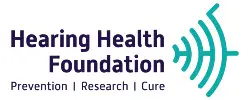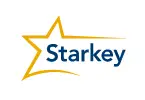Introduction
Every day, individuals with conductive hearing loss navigate a world not necessarily designed with them in mind. As a society, we can and must do better. By implementing policies that ensure equal access for students, providing necessary accommodations in the workplace, and leveraging the support of non-profit organizations, we can construct a more inclusive environment that respects and values the capabilities of individuals with conductive hearing loss.
As caregivers, we are the frontline advocates for our loved ones. Our roles transcend the boundaries of family ties, morphing into the realms of teachers, counselors, and policy advocates. The choices we make, the information we gather, and the support we offer can profoundly impact the quality of life for those we care for.
In this blog post, we delve deep into the realm of conductive hearing loss with an analytical approach, providing a comprehensive overview of resources and supports available. Through this exploration, we hope to equip you with the information you need to advocate effectively for your loved one, shedding light on the policies, accommodations, organizations, health insurance considerations, and government programs that are integral to this journey.
Understanding the world of conductive hearing loss is the first step towards effecting change. We invite you to join us in this exploration, to understand the challenges, and more importantly, the solutions that exist to foster a more inclusive society.
RCA OTC Hearing Aid Pair
Experience the world like never before with the RCA OTC Behind-the-Ear Hearing Aid. Our advanced digital technology ensures that every sound is crystal clear and vibrant, allowing you to fully immerse yourself in life’s experiences. Whether it’s the laughter of loved ones or the music that moves you, our hearing aid brings back the joy of every moment.
Say goodbye to the hassle of appointments and prescriptions. The RCA OTC Hearing Aid is designed to meet the needs of individuals without the need for a prescription. With its seamless setup and user-friendly design, you can effortlessly enhance your hearing abilities and stay connected to the world around you. Simply unpack, wear, and enjoy improved auditory perception instantly.
Experience optimal comfort and style with our discreet behind-the-ear design. The thin tube design allows you to wear glasses comfortably, so you can enjoy clear hearing while maintaining your personal sense of style. Plus, our rechargeable battery ensures long-lasting power, eliminating the inconvenience of constantly replacing small batteries. Elevate your hearing experience with the RCA OTC Hearing Aid and embrace the world with confidence.
Ensuring Equal Access Policies for Students with Conductive Hearing Loss
Education serves as the foundation for any individual’s future, and students with conductive hearing loss should not be an exception. Laws such as the Individuals with Disabilities Education Act (IDEA) are instrumental in leveling the playing field, ensuring that children with conductive hearing loss receive a free and appropriate public education.
IDEA mandates schools to develop an Individualized Education Program (IEP) for each eligible child with a disability, tailored to their specific needs. These IEPs encompass a range of potential accommodations, from additional time for test-taking to the provision of assistive listening devices. Furthermore, the law requires schools to provide these accommodations at no cost to families, making quality education accessible and inclusive.
Workplace Accommodations for Employees with Conductive Hearing Loss
In the realm of employment, the Americans with Disabilities Act (ADA) is a powerful tool for ensuring equal opportunities for individuals with conductive hearing loss. The ADA prohibits discrimination based on disability and mandates employers to provide reasonable accommodations.
Accommodations in the workplace can range from offering sign language interpreters to ensuring a quiet workspace, or providing specialized communication equipment. It’s worth noting that the definition of “reasonable” is case-dependent, with factors such as the size and resources of the employer playing a role. However, the overarching aim remains the same – to ensure that employees with conductive hearing loss can perform their jobs effectively and without undue hardship.
The Role of Non-Profit Organizations in Supporting Conductive Hearing Loss Community
Non-profit organizations form the backbone of support for individuals with conductive hearing loss. Organizations such as the Hearing Loss Association of America (HLAA) work tirelessly to offer resources, advocate for beneficial policies, and provide a supportive community for those affected by hearing loss.
From advocating for the rights of people with hearing loss to offering educational resources and providing platforms for shared experiences, these organizations play a vital role. They not only provide tangible resources but also work towards promoting a more inclusive society that acknowledges and values the contributions of individuals with conductive hearing loss.
QUIZ - SYMPTOMS OF HEARING LOSS IN CHILDREN
Health Insurance and Conductive Hearing Loss Navigating the System
Navigating health insurance can be complex, particularly when managing a condition like conductive hearing loss. Coverage can vary widely based on the specific plan and provider. However, under the Affordable Care Act, insurance companies cannot refuse coverage or charge more due to pre-existing conditions, including conductive hearing loss.
Moreover, many states have enacted laws requiring insurance companies to provide coverage for hearing aids and related services. Despite these advancements, gaps remain. As caregivers, it’s important to carefully review insurance policies, seek expert advice if necessary, and advocate for comprehensive coverage.
Government Programs Supporting Individuals with Conductive Hearing Loss
Government programs also offer a wealth of resources for individuals with conductive hearing loss. From Social Security Disability Insurance (SSDI) to Vocational Rehabilitation programs, these initiatives aim to provide financial support, access to employment, and a host of other resources.
For instance, the National Deaf-Blind Equipment Distribution Program, also known as the iCanConnect program, provides communication technologies to low-income individuals who have significant combined hearing and vision loss. Programs like these underscore the government’s commitment to improving the quality of life for individuals with conductive hearing loss.
Conclusion
As we conclude this examination of resources and support for individuals with conductive hearing loss, it’s clear that our society has made significant strides towards inclusivity and accessibility. But there’s always more work to be done. With ongoing advocacy and increased awareness, we can continue to build a world where conductive hearing loss doesn’t limit opportunities but serves as a testament to resilience, adaptability, and strength.
The policies for students, the accommodations in the workplace, the efforts of non-profit organizations, the nuances of health insurance, and the government programs we’ve explored in this blog post are more than just words on a page – they are real, tangible resources that can have a profound impact on the lives of individuals with conductive hearing loss.
Understanding these resources and the systems they navigate is a crucial step towards better advocating for your loved ones. It’s about more than simply understanding the challenges they face; it’s about actively seeking solutions and effecting change.
In your role as a caregiver, remember that you’re not alone. There are many organizations, policies, and resources designed to assist you. By harnessing these resources, you’re not just supporting your loved one – you’re contributing to a broader societal shift towards understanding, inclusivity, and respect.
Together, we can make a difference. We can break down barriers, challenge norms, and construct bridges to accessibility for individuals with conductive hearing loss. Together, we can shape a world that hears, understands, and values their contributions.

Untold Stories from the Frontline of Conductive Hearing Loss
Navigating conductive hearing loss? Gain unique insights from the frontline professionals – audiologists, otologists, psychologists, speech therapists, and ENT specialists, as they share their day-to-day experiences.

Untold Stories from the Frontline of Conductive Hearing Loss
Navigating conductive hearing loss? Gain unique insights from the frontline professionals – audiologists, otologists, psychologists, speech therapists, and ENT specialists, as they share their day-to-day experiences.





